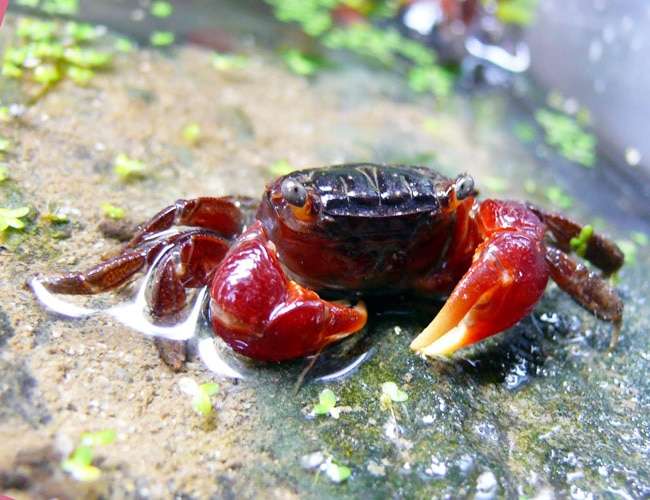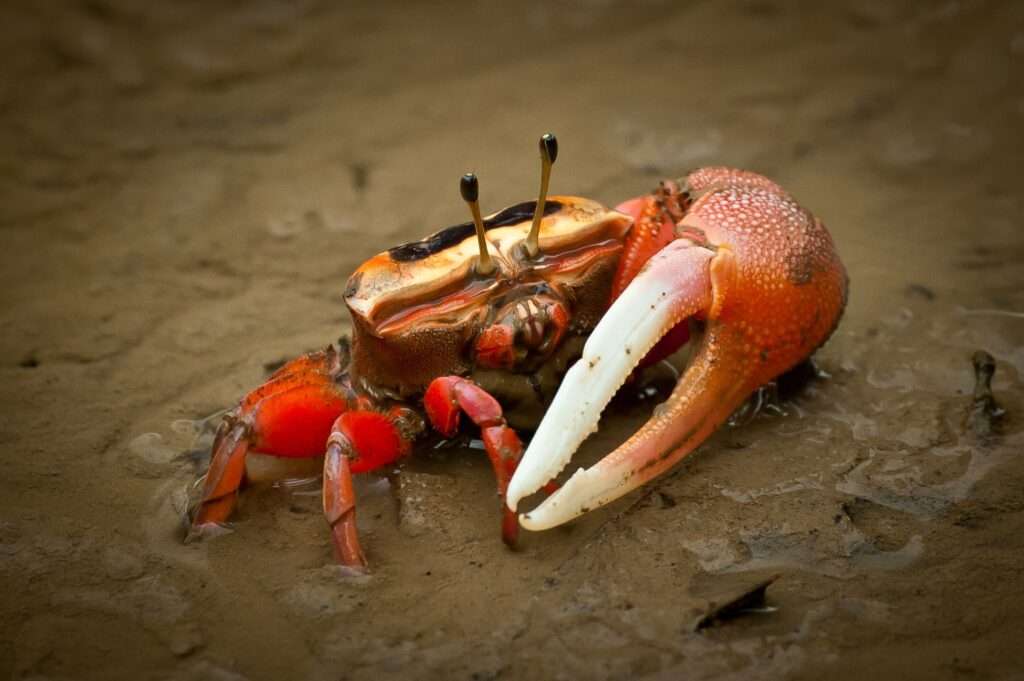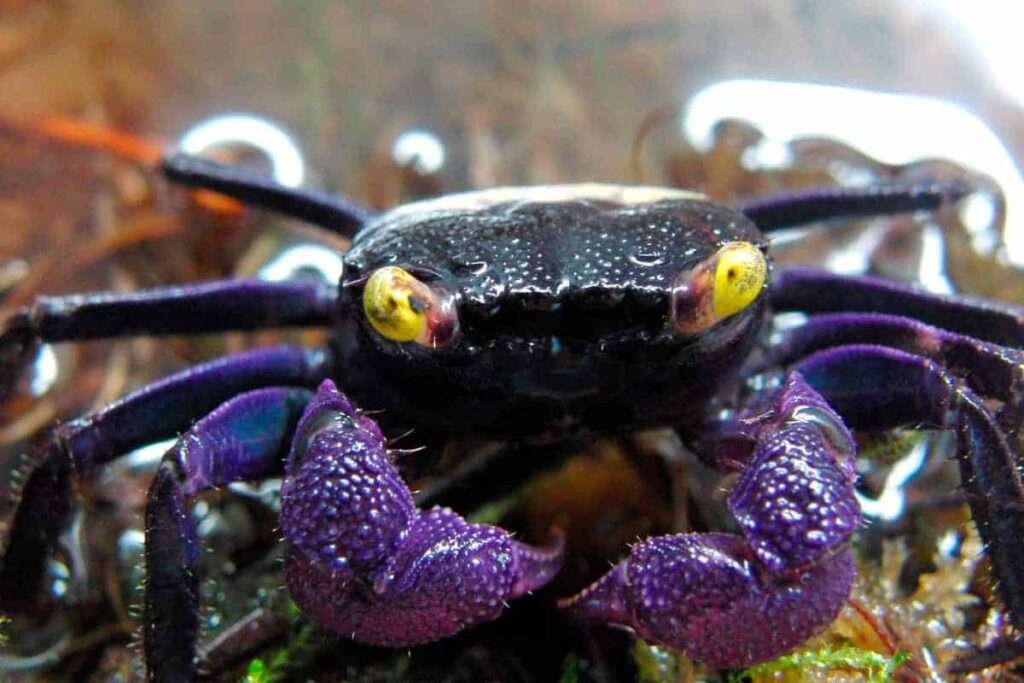
The red claw crab is a well-liked option because it is one of the more widely accessible freshwater aquarium crabs. They can cause harm with their striking red claw, which is quite sharp. Although they have a tendency to be hesitant, they soon begin to scamper around, investigate the tank, and break out of their shell.
The Red Claw crab is famous for being territorial, which makes a big tank necessary for housing them so they have room for alone time. Avoid having fish in the same tank as these crabs since although they can get along with other species, they can also consume some fish.
Habitat
Red claw crabs are also referred to as Perisesarma Bidens, Mini crab, or Sesarma Moeschi, and they are occasionally sold under these names. This type of crab is indigenous to Asia, where it can be found living and thriving in the warm, shallow mangrove swamps along the coast. Although they are mistaken for freshwater crabs and can live in freshwater, brackish water is where they thrive.
They are located in shallow mangrove swamps where the seawater frequently mixes in, increasing the salinity. This is the source of the erroneous belief that they are freshwater crabs.
Mangrove swamps are typically freshwater swamps rather than brackish ones, but since the ones where Red claw crabs are located are near the coast, the water will always have some salinity.
Feed
They love to eat shrimp flakes, seafood granules, Fish food, such as TetraMin® flakes, Shrimp dishes (such as Hikari’s crustacean cuisine, Algae wafers, and Brine shrimp), freeze-dried blood worms, spinach, peas, squash, leafy greens, and other vegetables.
You’ll notice that they will eat almost anything.
Remember that variety in diet is always preferable because it provides the numerous microelements that animals need. When you choose to feed veggies to Red claw crabs, you must proceed with caution.
Interesting Facts
- Despite being aquatic creatures, they will occasionally live on land to breathe the air.
- Blue Claw Crabs are considered invertebrate animals, or “arthropods,” because they lack a backbone.
- Did you know that their shells function as an exoskeleton to sense danger and defend them from it?
- These aquatic species will hide in caves or rocky nooks for a few days until their new shell solidifies, which allows them to shed their exoskeleton and grow.
- They can grow to their ideal size of 10 cm!
- When determining the sex, males and females can be distinguished by their larger, brighter red claws and their darker red claws, respectively.
Keeping as Pet

Tank Size
Red Claw crabs need to live in an aquarium tank that is at least 10 gallons large if you intend to keep them. The more space these crabs have, despite the fact that they are quite small, the better because they may be very territorial and aggressive. A single male crab and two female crabs can live in a 10-gallon aquarium. A bigger tank is required if you wish to house more animals. The crabs in a crowded tank are not often content.
However, a paludarium is the ideal place to keep these semi-aquatic crabs. The basic design of a paludarium combines an underwater and terrestrial environment, making it the ideal tank for semi-aquatic Red Claw crabs. Your paludarium should have a width of about 24 inches.
Water Parameters
Wild crabs can be found in the hard, somewhat alkaline, tropical, brackish shallow waters of the coastal mangrove swamps. A tiny amount of marine salt can be added to the water to provide the salinity the crabs require. The water’s salinity should be roughly one-sixth that of saltwater.
Red Claw crabs prefer the following water characteristics:
- Water should have a pH of 7.6 to 8.5 and a hardness of 8 to 25 dGH.
- Water temperature should be between 70 and 88 °F.
- 1.005 specific gravity (saltiness)
Substrate
Sand is the ideal substrate for Red Claw crabs. Sand is a soft, secure substance for these creatures since they prefer to burrow, dig, and scavenge. You can construct a continent out of sand or use specialized floating perches to create a habitat for the crabs in a typical fish tank. Most specifically designed paludariums have shelves that, if you choose to go that route, you may landscape.
Table





